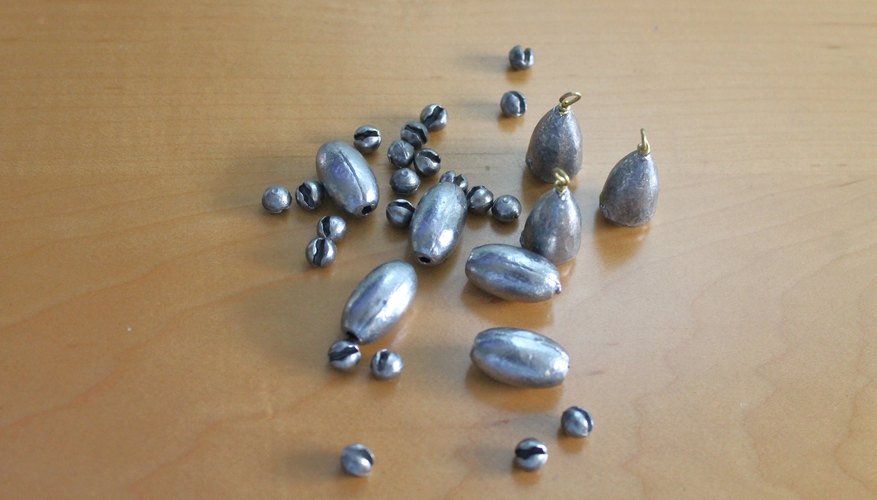
According to Bass Pro Shops, sinkers are one of the most important elements of your fishing tackle. The Fish Resource website explains that using a sinker of the right style and weight can enhance your cast and allow you to anchor, troll, drift and present your bait or lure more effectively. Choosing the best sinker for a given scenario--whether a traditional split shot, convenient rubber core or more sophisticated tied sinker--involves many factors. Fortunately, putting a sinker on fishing line is a quick and simple process, making it easy to try different options until you find one that works well for you.
Split Shot

Dana Dowling/Demand Media
Press the fishing line into the groove of the split shot sinker. The placement of the sinker can vary. Common arrangements include a single sinker between the hook and bobber for bait fishing, as well as a series of sinkers with different weights to control drift below a float.
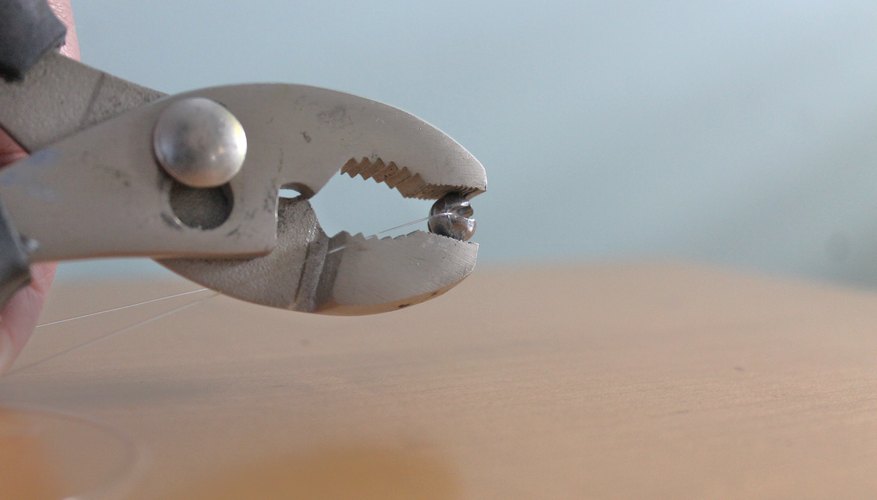
Dana Dowling/Demand Media
Squeeze the sides of the split shot sinker to compress the metal until it grips the fishing line tightly.

Dana Dowling/Demand Media
Tug gently on the sinker to confirm that it is securely fastened to the line.
Rubber Core

Dana Dowling/Demand Media
Press the fishing line into the rubber-lined groove of the sinker.

Dana Dowling/Demand Media
Twist the tabs at each end of the rubber core sinker in opposite directions. This will wrap the fishing line around the tabs and secure the sinker to the line.
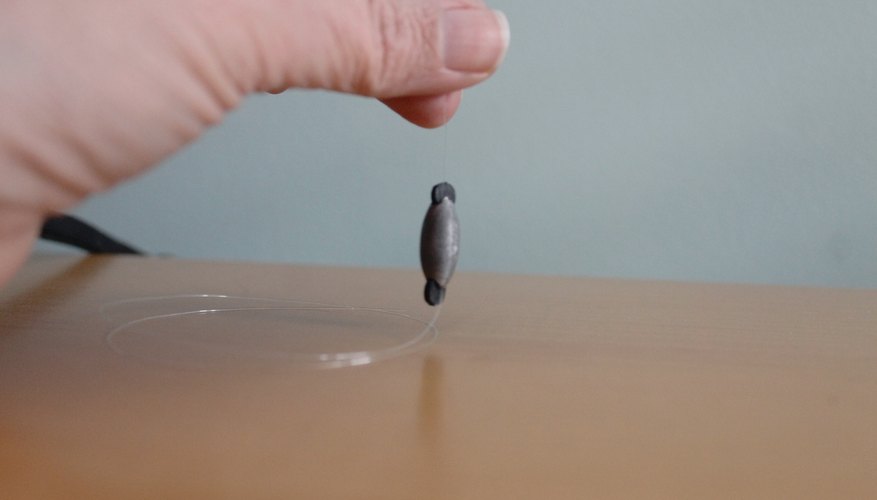
Dana Dowling/Demand Media
Tug gently on the sinker to confirm that it is securely fastened to the line.
Ring, Loop and Eye
Use the lightest sinker possible for a given situation. Excess weight may discourage fish from taking the bait, and it can alter how the line feels as you cast and fish with it. Bell, pyramid, bank, reef, walking, egg, cone and other sophisticated sinkers may require special knots and configurations for best results. When in doubt, consult a trusted book or website, such as those listed as resources, for guidance on choosing and using fishing knots.
You can also attach sinkers with large loops or eyes by pulling a loop of line through the sinker's opening, pulling the sinker through the loop and then pulling the loop tight. This should hold the sinker firmly in place without requiring you to remove tackle or tie permanent knots in the line.
Traditional split shot sinkers are not reusable and may nick or damage your fishing line. If you expect to be swapping out sinkers often, consider a rubber core sinker.
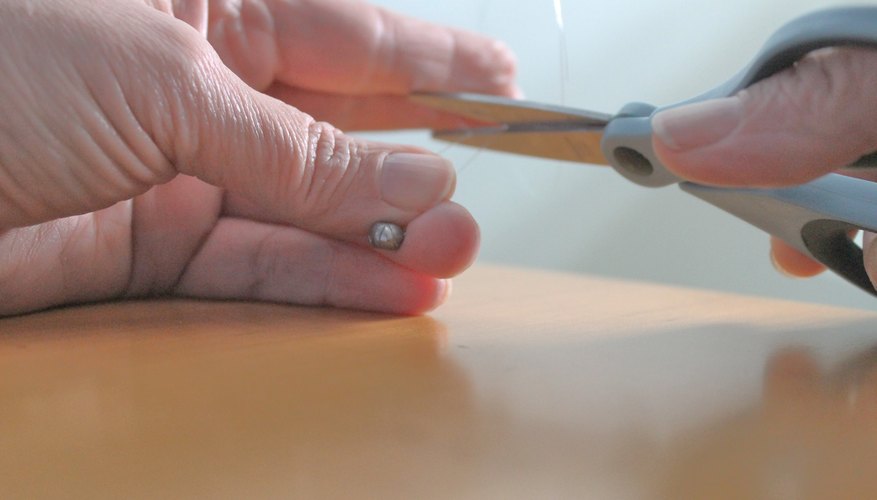
Dana Dowling/Demand Media
Remove the hook and any other tackle between the end of the line and the place your sinker will go.
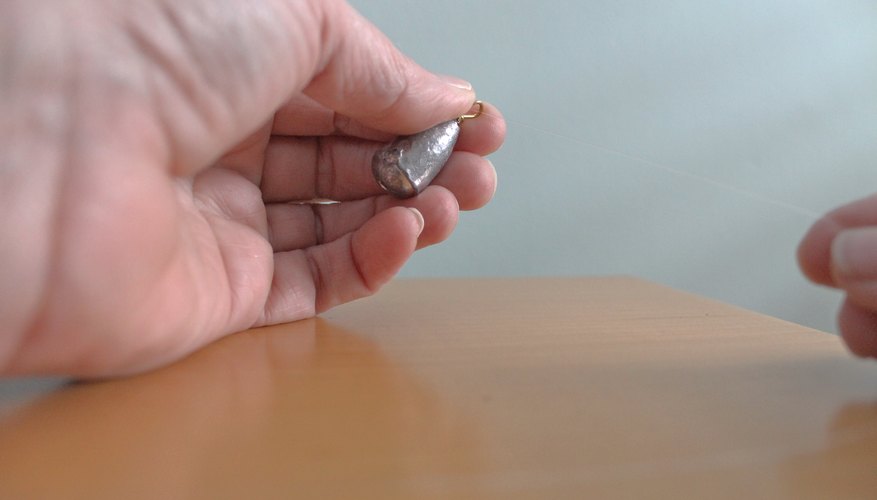
Dana Dowling/Demand Media
Thread the end of the fishing line through the ring, loop or eye of the sinker. Many sinkers have a sizable opening that will make this step easy, while others require you to thread the line through a tiny channel bored through the sinker.
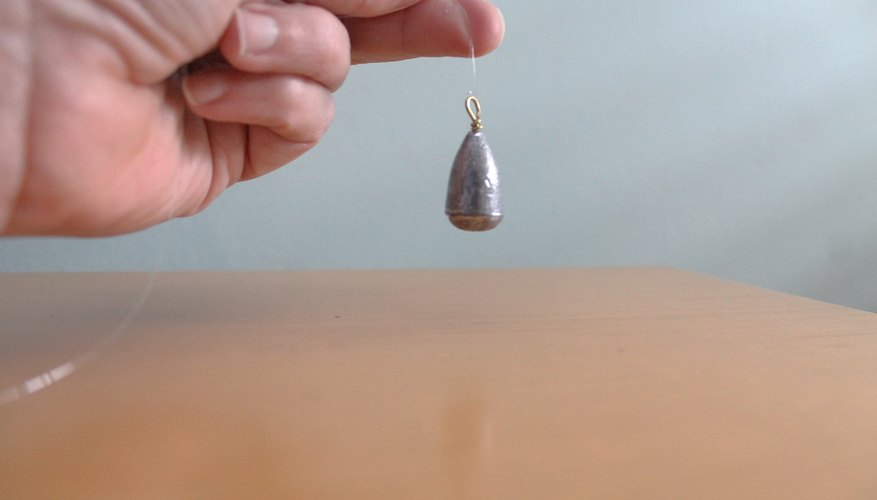
Dana Dowling/Demand Media
Tie a knot below the sinker at the point where you want the sinker to rest. Leave enough free line beyond the knot to accommodate your hook and any other tackle you need to place below the sinker.
Tips
Warnings
References
Writer Bio
A copywriter and editor since 1998, Will Capra has handled projects for Fortune 50 companies, health care and higher education institutions and nonprofits, and his work has garnered numerous awards. Capra is also a prolific online writer, covering topics ranging from travel to technology for eHow. Capra holds a B.A. in English and is pursuing a master's degree in the same subject.



